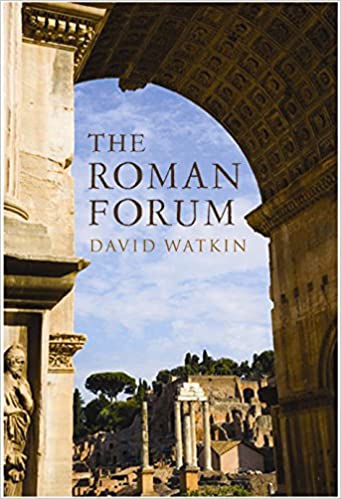‘Archaeology often brings to light relics—mysterious foundations, tumbled blocks, a charred sacrificial pit, the decaying stumps of dead houses—fascinating to the scholar but a stunning bore to the simple visitor.’ So wrote Dilys Powell in The Villa Ariadne. Archaeologists can be monomaniacs and their interests are often distressingly narrow. So it was with some anticipation that I took up David Watkin’s The Roman Forum, whose contentions are very clear: ‘Archaeologists have eliminated much evidence of the fascinating post-antique life of the Forum,’ and their labours have made ‘visiting parts of the Forum about as attractive as looking into the hole made in New York on 9/11.’ Ouch! These accusations run like leitmotifs throughout the book, together with the curious conspiracy theory that guidebooks are complicit; that there are things they ‘do not want us to see’.

If one works night and day to produce guidebooks, it is difficult not to get on the defensive. The Portico of the Dii Consentes doesn’t ‘turn out’ to be a modern reconstruction. Pay attention to your Blue Guide! It clearly says that it dates from 1858. There is no plot to keep visitors in the dark about the churches of San Lorenzo in Miranda or Santi Luca e Martina. They are just never, ever open. But for Watkin, everything was better in the time of Piranesi. Piranesi, he tells us, with the authority of one who knew him in a former life, recorded the Forum ‘at the last time when it was still a place of poetry, capable of inspiring great painters, writers and thinkers.’ Glum stuff, but the threnody does begin to strike a chord and the aimiable style in which the bad news is delivered soon reels you in. Watkin laments the fact that the Forum has been turned inside out: its surviving churches open away from it, no longer into it; it has been severed from the life of the city and turned into a visitors’ theme park. Up until a very few years ago, entry was free and one could use the Forum as a thoroughfare; Romans going about their daily business could loiter and linger in it. Now you have to queue to be admitted through a turnstile, custodians are bossy and offhand, and no one who is not a tourist (or an archaeologist) ever goes there. The magnificent ‘challenge of the relationship between ancient and modern’ has been obscured.
Despite the underlying crotchetiness, the book is immensely enjoyable. Watkin’s love for the Forum, his breadth of knowledge, and his wistfulness about what might have been (in a Peter Pan world) are ingenuous, impressive and infectious—a beguiling combination. The chapter on the despoliation of the Forum’s monuments in the service of the new St Peter’s is a superb read. No visitor should ever again imagine that the mere march of time had anything to do with it. What Watkin cannot admit, though, is that if archaeologists hadn’t got their hands on the Forum when they did (in the late 19th century), the urban planners certainly would have. And the challenging relationship between ancient and modern would now be as desperate a tussle there as it is at Largo Argentina.
Nevertheless, if you’re travelling to Rome—either for the first or the fiftieth time—I recommend that you get this book. Not only will it add whole layers of meaning to your visit, but it will also force to you answer the following testing questions: if archaeologists are to be banished, who will take their place (and who will pay for it)? What is the point of a desert like the Forum in the centre of a busy and increasingly cramped-feeling capital city? And whose opinion was nearer to the mark: Palladio’s, for whom the Forum offered ‘not the spectacle of ancient glory but rather the possibility of recreating it’; or Pevsner’s, for whom the Forum belongs ‘to the civilisation of Antiquity, not to what we usually mean when we speak of European civilisation’? Watkin loves the Baroque churches that were built over the ancient ruins in the 17th century. But did their architects believe they were ‘recreating’, or did they believe they were moving forward into a ‘modern’ era?
Reviewed by Annabel Barber
Blue Guide Rome (10th edition) has extensive coverage of the Forum, with a map of the site and detailed notes on all its monuments, past, present and conjectural.






